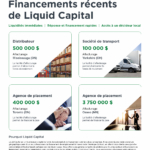How to ask for invoice payments the right way—and get paid
Your business survival depends on a positive cash flow.

As a business owner, you probably have some favorite clients. Those people you can call up and chat with about business easily, but that you also get to know on a personal level. The ones who have grown professionally alongside you, having battled through the highs and lows together. You may have both developed a mutual loyalty.
So what happens when a client doesn’t pay on time?
Even if you want to remain loyal to a non-paying customer, unpaid accounts can negatively affect your cash flow. And without any cash reserve, you may struggle to keep up with overhead expenses.
Your employees, suppliers and vendors also need to be paid every month, and if your client payments fall behind, you’ll experience an even bigger working capital crunch. If you’re unable to effectively run your business because your clients aren’t regularly paying you, it’s time to do something about it.
How to ask for invoice payments the right way:
If you’ve implemented the above tactics to avoid non-payment but still have clients that refuse to pay you, consider the following:
Get in touch with the main point of contact personally.
Before taking any drastic measures, pick up the phone and call your customer to have a one-on-one conversation with them. In some cases, your team may have been messaging their Accounts Payable team, but the owner, decision-maker or your key contact may not even realize that payment is outstanding.
Verbally remind them of any outstanding balances, and notify them of any late fees that they’ve incurred or will continue to incur if they fail to make payment. If it’s getting hard for you to get in touch, you may be able to speak to another colleague in a senior role who could shed some light on the situation and come to a mutual agreement on payment timelines.
Try to understand why your customer is unable to pay you.
Communication is key to overcoming stressful situations such as non-payment, so it’s crucial to understand the reason for the delay.
Over the past year, businesses have been hit hard by the pandemic. Many continue to see declining sales, have been impacted by lockdowns and travel restrictions, and some have even had to shut down operations. It may be a good idea to investigate if the pandemic has affected your customer. Chances are they’re experiencing a slow season, or also waiting on capital tied up in invoices. Showing a little empathy goes a long way, especially in today’s uncertain economies.

Stay top of mind with friendly reminders.
Sometimes, all it takes is a little reminder to push your client to pay an outstanding invoice. You can use accounting software or manually set up friendly reminders that follow-up with clients at certain points after an invoice is sent out.
You can set frequencies based on their payment history. If you know a customer takes their time to pay you, schedule more frequent reminders. It’s best to check in with clients to strengthen the relationship, and be open to a two-way conversation. By doing so, you’ll encourage customers to come forward if they think there will be a delay in paying you.
If nothing else works, the last resort is to get outside help.
Your primary goal should be to resolve any non-payment issues without getting third-parties involved. Because let’s face it, no one likes to be the bad guy.
If a client is unresponsive after multiple attempts of communication, then hire a professional to send a notice to a customer who hasn’t been responsive. Hopefully, you’ll be able to resolve the matter without further legal measures.
Alternatively, you may also consider hiring a collections agency to try and recover payment.
Recovering a payment doesn’t have to be a stressful experience
Late payments can have a negative effect on your business. They slow down growth, you risk not paying your employees or vendors, and they interrupt the day-to-day of your operations. So how you ask for invoice payments from non-paying customers is important.
It doesn’t have to be a stressful experience — when you are waiting on payments, consider taking steps we shared in part one of this series, followed by the tips outlined in this post.
By following through, you’ll get to the bottom of why a client is unable to pay on time, and decide if you should adjust the working relationship.






